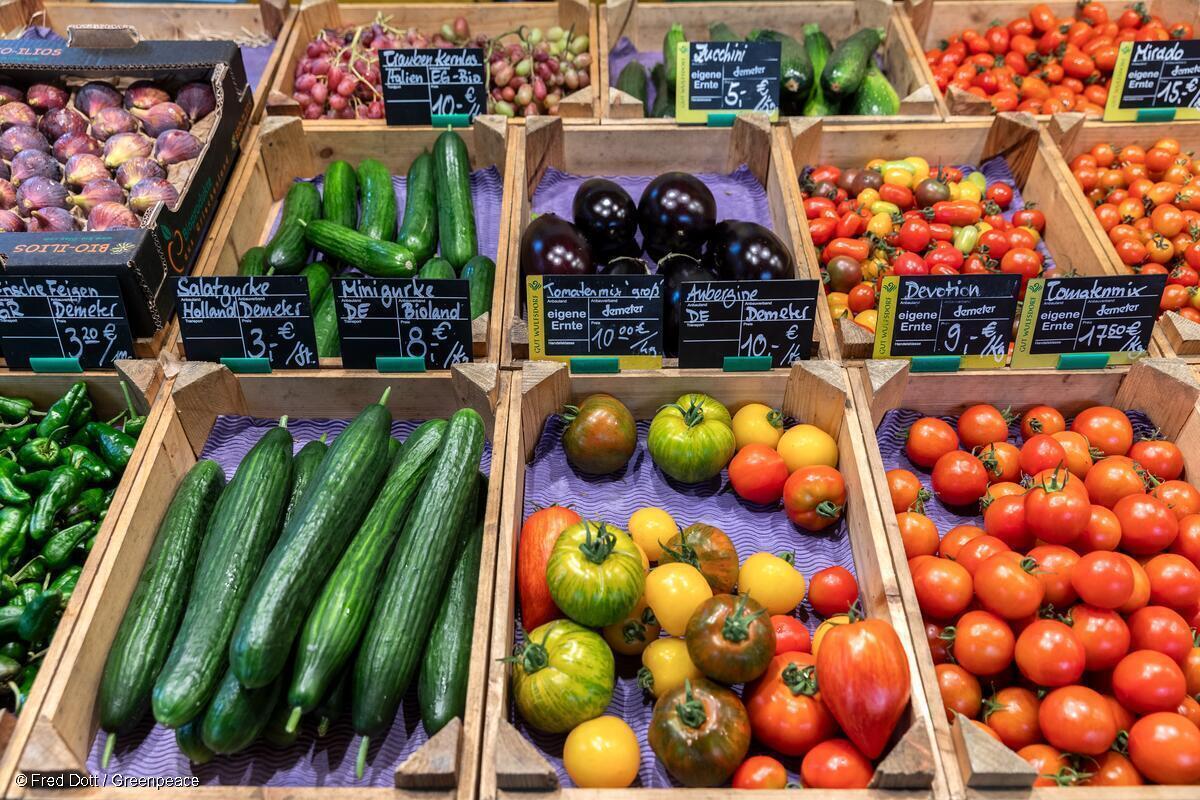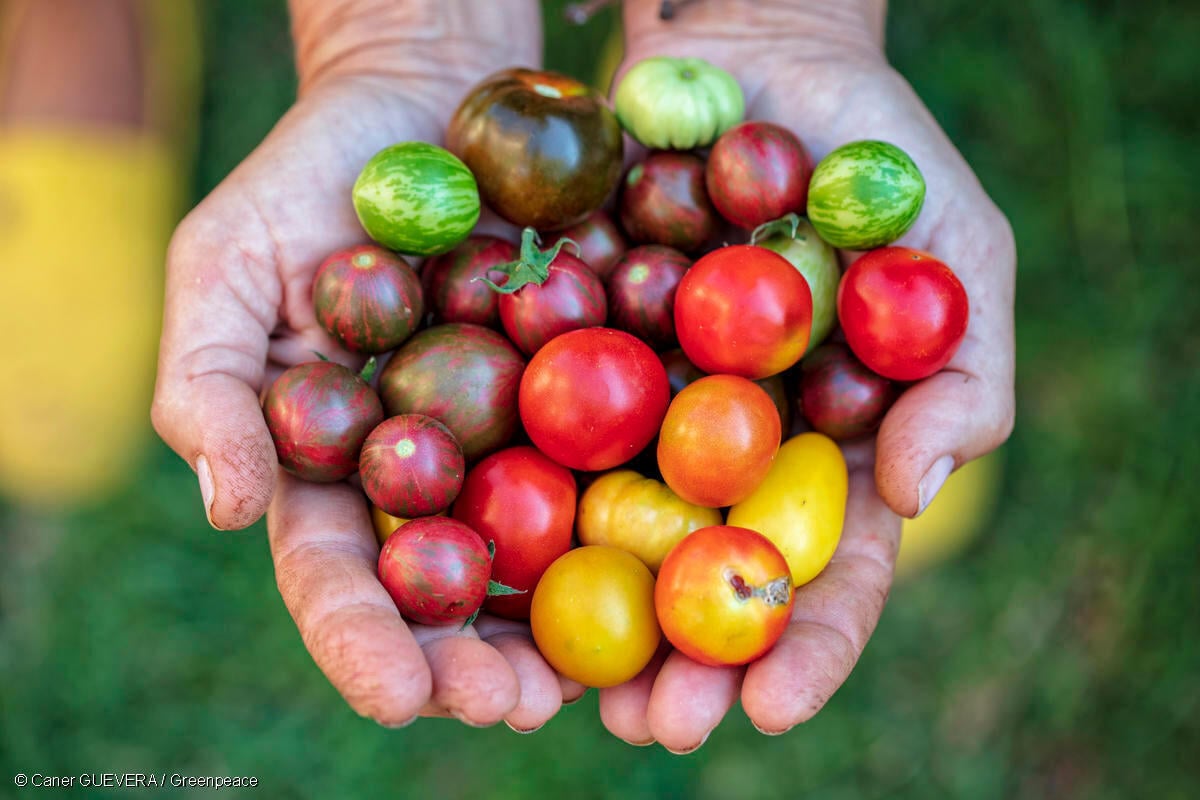A group of NGOs and non-GMO food associations from Europe, New Zealand and the USA and a leading European retailer have published a detection method for the first commercialised genetically modified (GM) crop developed with gene editing – SU Canola, a herbicide-tolerant rapeseed engineered by US company Cibus. [1]
The new method is a game-changer at various levels:
– On the regulatory front, the method allows European Union (EU) countries to carry out checks to prevent this GM crop, which is not authorised in the EU, from entering the food and feed supply chain illegally. Until now, EU countries were unable to test imports for the presence of this GM crop, which has been grown in parts of the US and Canada since 2014 and 2018, respectively.
– Scientifically, the method provides a procedure that can be used to develop further detection methods for most, if not all, gene-edited crops.
– On a policy level, the test shows that new GM crops engineered with gene editing techniques can be identified and distinguished from similar, non-GM crops, despite repeated claims by the biotech industry and some regulators that they are not detectable and, for this reason, cannot be regulated.
– Commercially, the test enables gatekeepers – food companies, retailers and certification bodies – to test for the presence of this gene-edited rapeseed. While it is generally the authorities’ job to keep illegal GMOs out of the EU, this will give added confidence to organic and conventional producers as well as consumers that products do not contain GMOs, including new gene-edited crops.
Greenpeace EU food policy director Franziska Achterberg said: “The EU’s highest court has ruled that gene-edited crops are regulated under the EU’s GMO regime and that this is necessary to protect consumers and the environment. Some claim that gene-edited crops cannot be found and therefore cannot be regulated under the EU’s GMO regime. We have shown that GM crops created with gene editing can be detected. There are no more excuses for failing to apply existing GMO safety and labelling requirements to these new GMOs. The European Commission and governments must build on this success and develop screening procedures that can identify gene-edited products”
An open source test to detect a gene-edited crop
The method has been developed to detect a specific GM product – a herbicide-tolerant rapeseed (SU Canola) which is sold by American biotech company Cibus under the Falco brand. The test is open source and has been published after peer review in the scientific journal Foods.
The research was led by Dr John Fagan, a pioneer of GMO testing. Dr Fagan currently heads the Health Research Institute (HRI Labs), a US-based independent, non-profit laboratory and scientific research organisation. The laboratory work was carried out primarily at the California-based lab SomaGenics.
The test distinguishes gene-edited SU Canola from widely cultivated rapeseed varieties that are also tolerant to sulfonylurea and imidazolinone herbicides but were developed using another technique called chemical mutagenesis.
The method is highly sensitive and specific and meets European Union regulatory standards for the detection of GMOs. Its robustness and reliability have been validated by the GMO analysis laboratory of Environment Agency Austria (Umweltbundesamt).
This test was not designed to determine the GM technique used to engineer the rapeseed. There is no requirement under EU GMO law to identify the technique, only the GMO itself.
Based on a commonly used GMO detection technology – “polymerase chain reaction (PCR)” – the test can be readily integrated into the analytical routine of any typical regulatory or commercial GMO testing laboratory.
The test has been developed with two of four cultivars of Cibus’ SU Canola that are on the market today – 40K and 68K. Based on public record information on Cibus‘ canola varieties, it is highly likely that the method will also detect the two other varieties – 32K and 79K. That can be confirmed by applying the test to those varieties. The challenge is accessing the seeds, and the group of NGOs and associations invites Cibus to make those quickly available to regulators and others in the interest of transparency and accountability to growers, consumers and food and feed companies.
Cibus’ SU Canola – another herbicide-tolerant GM crop
SU Canola is a genetically engineered rapeseed variety. Like the majority of GM crops planted today, it has been engineered to tolerate spraying with broad spectrum herbicides. SU Canola is a GMO under EU GMO law. It is not authorised for cultivation or for use as food/feed in the EU, and no application for authorisation has been submitted.
SU Canola is presented to farmers as a “growing system” together with a commercial herbicide formulation called Draft that is produced by pesticide manufacturer Rotam. Cibus recommends that SU Canola be used “in rotation with glyphosate-tolerant crops” to control glyphosate-resistant weeds.
SU Canola is commercially grown in the US and Canada. As of August 2020, three SU Canola lines are available on the US market (68K, 32K and 40K) and two in Canada (68K and 79K).
In the US, SU Canola is primarily grown in North Dakota and Montana, where most US rapeseed is grown. In 2019, SU Canola had a 4% share (or about 80,000 acres) in the US rapeseed market, according to Cibus’ own figures. In Canada, SU Canola is available in Manitoba and Saskatchewan. Figures on how widely it has been taken up are not readily available.
Currently, it is not clear whether SU Canola is entering the EU illegally in rapeseed imports from the US or Canada. In 2019, the EU imported 1.05 million tons of Canadian rapeseed, according to EU statistics. Canada is the second-biggest importer (29%) to the EU after Ukraine (57%). By contrast, EU rapeseed imports from the US are negligible.
Nevertheless, Cibus told the European Commission in 2015 that its products were “likely entering the international commodity chain” and that it could not be excluded that they were imported in the EU.
Gene-edited crops – a new class of GMOs
The term ‘gene editing’ is often used to refer to a range of new genetic engineering techniques that make it possible to obtain new traits without adding foreign genetic material. SU Canola was developed using one such technique, oligonucleotide directed mutagenesis (ODM). In addition to the intended changes, gene editing also causes unintended genetic changes to products that have the potential to be allergenic, toxic, with diminished nutritional value and/or harmful to the environment. The long-term health and environmental impacts of GM crops engineered with gene editing are as yet untested.
To date, only two gene-edited GM crops have made it to market: Cibus’ SU Canola and Calyxt’s High Oleic Soybean (engineered with TALENs). The Cibus rapeseed is grown in the US and Canada, whereas the Calyxt soybean is only grown in the US.
The European Court of Justice (ECJ) ruled in 2018 that gene-edited organisms are GMOs and fall under the EU’s GMO legislation. The Court said excluding new GMOs from the regulations would go against the purpose of the legislation and fail to respect the precautionary principle enshrined in the EU’s founding treaties, which are the foundations of the EU’s food safety standards.
The ECJ’s ruling means that new GMOs created with gene editing cannot be marketed in the EU unless they have received an EU authorisation, following a case-by-case health and environmental risk assessment. Developers must submit a specific detection method for their product. Once authorised, products must be labelled as GMOs and be traceable.
Until now, no gene-edited GMOs have been authorised in the EU, and no application for placing them on the market has been submitted.
The need for analytical tools to detect gene-edited GMOs
Being able to monitor for the presence of GMOs is essential for managing risks to the environment and public health as well as the economic risks that GM ingredients pose to food producers and companies. It is also essential to deliver on the public’s right to know whether the food they consume contains GMOs.
The biotech industry and some regulators have claimed that it is often impossible to detect new gene-edited GMOs and that, as a result, the EU GMO laws cannot be applied to this new class of GMOs.
For example, the German Federal Agency for Consumer Protection and Food Safety (BVL) stated in 2017 that a plant created with Cibus’ gene editing technique “would not be distinguishable from a plant which had acquired the same point mutation naturally or by means of chemical- or radiation-induced mutagenesis”. In May 2019, a number of industry associations claimed that the 2018 ruling of the European Court of Justice was “virtually impossible to enforce, given that many gene-edited products may be indistinguishable from products changed by natural processes or with conventional breeding techniques”.
These claims have unsettled EU governments tasked with the enforcement of EU GMO laws. In 2019, a majority of EU member states stated that they were unable to do so, citing “practical questions” about the 2018 ruling of the European Court of Justice, including “how to ensure compliance with Directive 2001/18/EC” in cases when gene-edited products “cannot be distinguished, using current methods, from products resulting from natural mutation”.
The new detection test opens the path for detection of new GMOs. Methods such as the one we developed for SU Canola can distinguish new GM crops from similar crops in a manner fully compliant with EU regulations, including from crops carrying the same intended genetic alteration. Nothing stops the EU from implementing the 2018 ruling of the European Court of Justice that EU GMO laws designed to protect people and the environment must be applied to these products.
What EU governments and institutions should do
European governments should use the new detection method in their routine GMO testing so this new GM crop, which is not authorised in the EU, does not enter food and feed supply chains illegally. European governments are obliged to apply and enforce the GMO law – including safety testing, traceability and labelling – for all GMOs including those produced through gene editing.
The European Commission should immediately task the European Network of GMO Laboratories (ENGL) with building on the new detection method and develop screening methods to identify future gene-edited products.
The European Food Safety Authority (EFSA) should develop guidance for the risk assessment of gene-edited organisms that takes into account the specific processes and tools used to engineer them.
What European food and feed companies can do
Food and feed producers, traders and retailers can use the test to ensure their products do not contain SU Canola. German and Austrian associations for non-GMO food, VLOG and ARGE Gentechnik-frei, have declared that they will incorporate the new detection method in their own monitoring schemes and work towards having it included as an integral part of official non-GMO certification and inspections by food safety authorities at the earliest possible date.
Note to Editors:
[1] The research was funded by NGOs Greenpeace European Unit and Greenpeace Germany, and the Sustainability Council of New Zealand; associations for non-GM foods VLOG (Germany), ARGE Gentechnik-frei (Austria) and the Non-GMO Project (USA); the Organic and Natural Health Association (USA); organic food and farming association IFOAM Organics Europe; and Austria’s leading retailer SPAR.
Contacts:
Franziska Achterberg, EU food policy director, Greenpeace European Unit: +32 498 36 24 03, [email protected]
Luisa Colasimone, Greenpeace EU press desk: +351 910 678 050, [email protected], CEST (GMT+1)
For breaking news and comment on EU affairs: www.twitter.com/GreenpeaceEU



